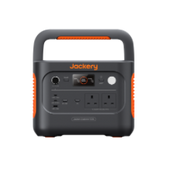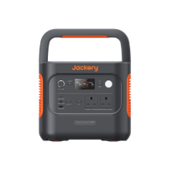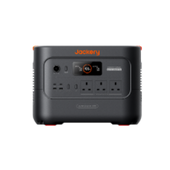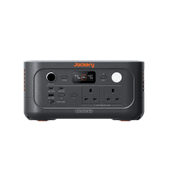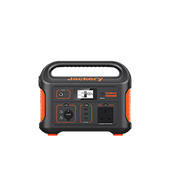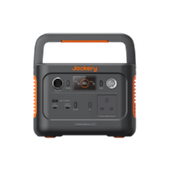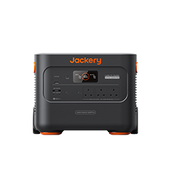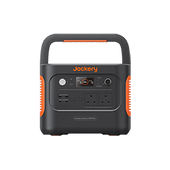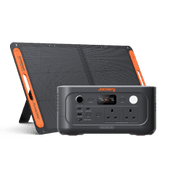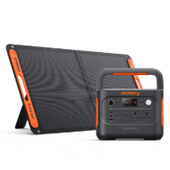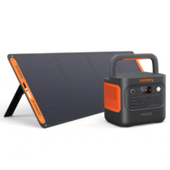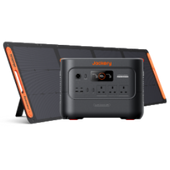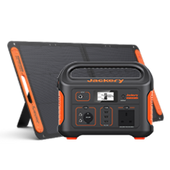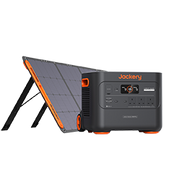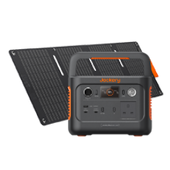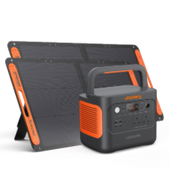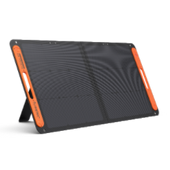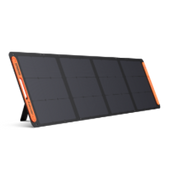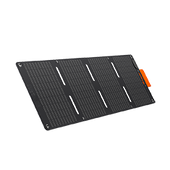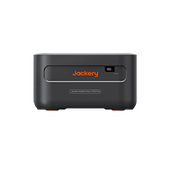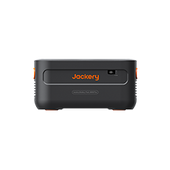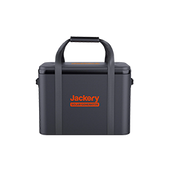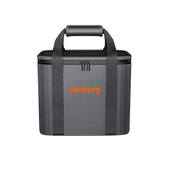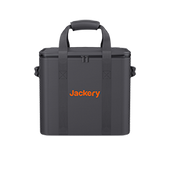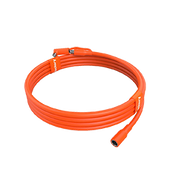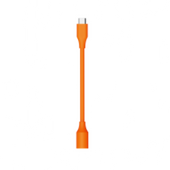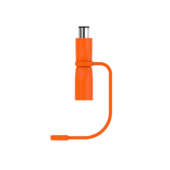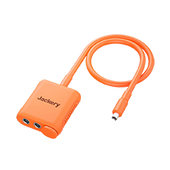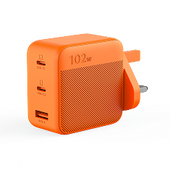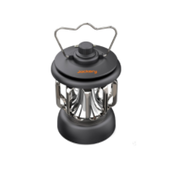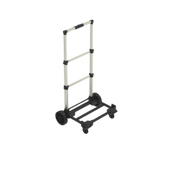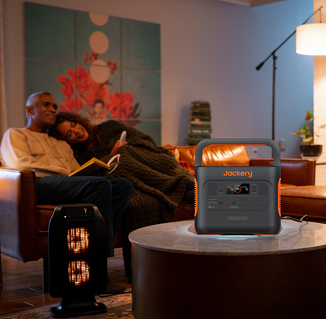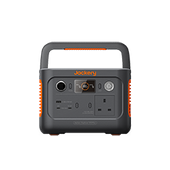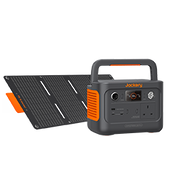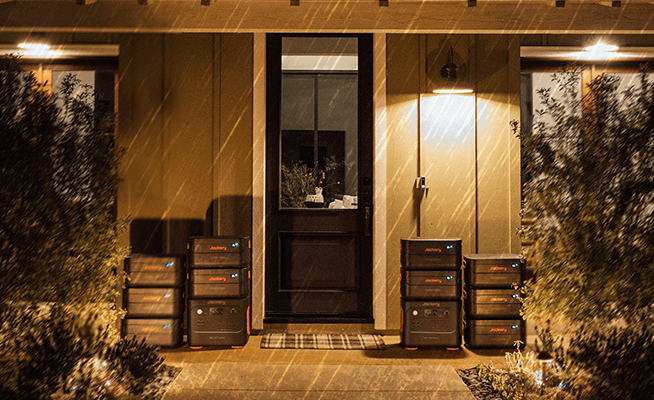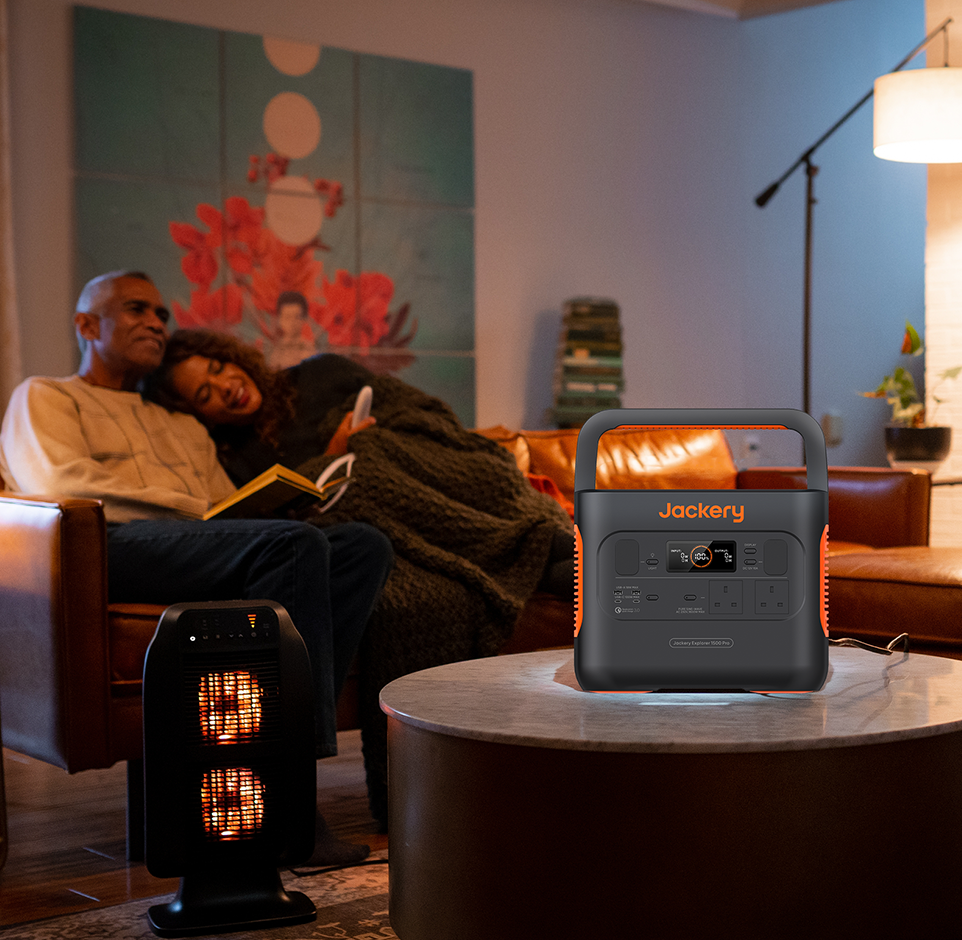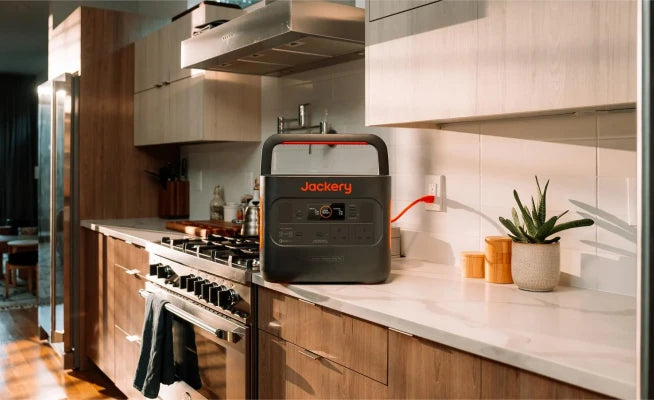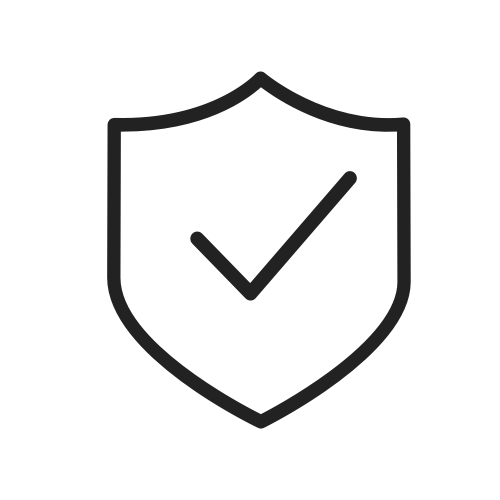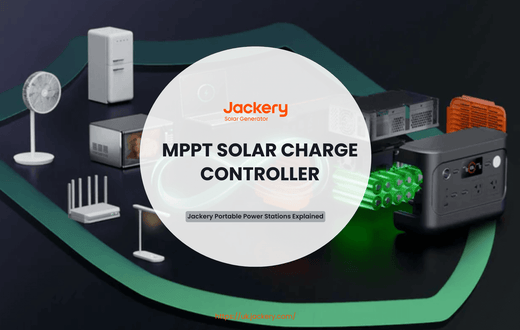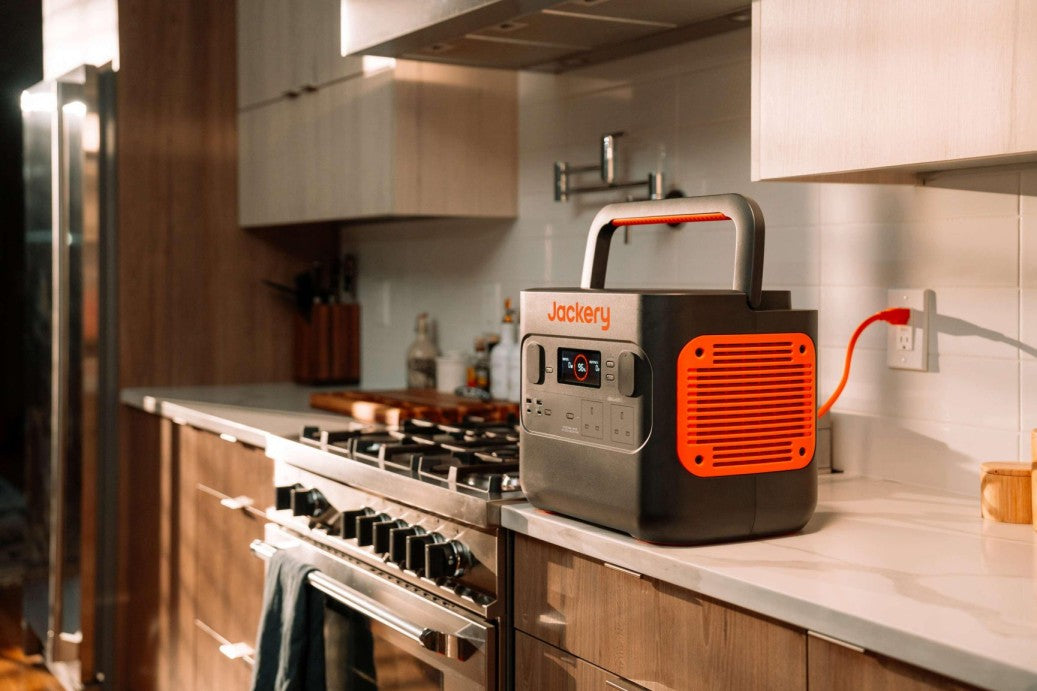The best solar charge controller is essential to promote the energy output of your solar panels. MPPT solar charge controllers' advanced tracking algorithms and higher efficiency ensure optimal energy conversion and power generation. By connecting your solar panels to an MPPT solar charge controller, you can harness the full potential of your solar power system.
This guide will show you everything you need to know about the MPPT solar charge controller, including its working principle, how to use and test one, and the differences between MPPT and PWM solar charge controllers. The MPPT charge controller will help a solar system in case of over-charging and other issues.
However, installing a whole solar panel system can be time-consuming and costly, so we recommend you try solar generators, which combine solar panels with portable power stations. The Jackery Portable Power Stations install an MPPT solar charge controller to maintain a stable power supply.
|
Key Takeaways: |
|
- MPPT solar charge controller enables the system to charge the battery at maximum power output. - MPPT solar charge controller maximises energy collection efficiency through real-time monitoring and adjustment. - A detailed guide to the proper use of MPPT solar charge controller. - There are several factors to consider when selecting an MPPT solar charge controller. - Jackery Explorer 1000 Plus and 1000 v2 adopt MPPT solar charge controller and lithium batteries to provide consistent and stable power for home and outdoor uses. |
MPPT Solar Charge Controller Overview
In solar power generation systems, solar charge controllers play a vital role. Connecting solar panels directly to batteries can cause severe damage to both. Solar charge controllers can control the amount of charge from solar panels to batteries. Among them, solar charge controllers can provide multiple protections for solar systems, such as stopping "reverse polarity" (i.e., current changes direction), protecting batteries from high surges and low voltages, as well as over-discharge (too low current) and cutoffs.
What is an MPPT solar charge controller?
The MPPT is an upgraded traditional solar charge and discharge controller product. It detects and tracks the solar panel's real-time power generation voltage and current. The MPPT solar charge controller is like the brain of the photovoltaic system, coordinating the work of solar panels, batteries, and loads to ensure efficient energy use.
Application of MPPT solar charge controller
MPPT solar charge controller has been widely used in many fields due to its high efficiency and intelligent characteristics. The following are specific applications of MPPT solar charge controller in different scenarios:
• Home photovoltaic system
• Solar streetlights and monitoring systems
• Power supply systems in remote areas
• Building-integrated solar systems
• Agricultural and fishery applications
• Large commercial and industrial solar power stations
• Hybrid energy systems
• Mobile and portable devices
In short, MPPT solar charge controllers have extensive application scenarios, covering various power needs from home to industry, from cities to remote areas.
How Does the MPPT Solar Charge Controller Work?
The MPPT solar charge controller's primary function is to monitor and adjust the output voltage and current of the photovoltaic panel in real-time. Based on the variables, the controller continuously adjusts the load to maintain the highest power transfer from the solar panel to the batteries. This dynamic tracking enables efficient energy conversion and increased power generation.

The MPPT solar charge controller achieves maximum power point tracking through the following steps:
Real-Time Monitoring
Each solar panel has a maximum power point, which is the point at which it can produce the maximum power under a given voltage and current combination. This point varies with light intensity and temperature. The MPPT solar charge controller determines the current maximum power point by monitoring the solar panel's output and environmental conditions in real-time.
Dynamic Tracking and Adjustment
The MPPT solar charge controller uses an algorithm to track this point dynamically and continuously adjusts the solar panel's operating status to keep it running at the maximum power point. It also adjusts the panel's load impedance to match the voltage and current conditions of the maximum power point.
Optimise Power Conversion Efficiency
Once the optimal operating point is determined, the MPPT solar charge controller adjusts the panel's output to provide the voltage and current best suited to charge the battery.
Intelligent Management
The MPPT solar charge controller can adapt to environmental conditions, such as cloudy mornings, evenings, or temperature changes, to ensure the panel operates efficiently. Some advanced MPPT solar charge controllers also have intelligent management functions like data logging.
In short, the MPPT solar charge controller maximises energy collection efficiency by keeping the solar panel in the best working condition through real-time monitoring and adjustment.
MPPT VS PWM Charge Controller
In a solar power generation system, the charge controller, as one of the core components in the photovoltaic system, regulates the charging process of the solar panel to the battery. The solar charge controller's performance directly affects the system's efficiency and reliability.
Although MPPT and PWM solar charge controllers have similarities, their working principles, efficiency, and cost differ. Below, we will compare them in multiple dimensions to help you decide which is more suitable for your needs.

Working Principle
The MPPT solar charge controller uses an intelligent algorithm to monitor the solar panel's voltage and current in real-time and track its maximum power point. The PWM controller uses pulse width modulation technology to control the solar panel's output voltage and frequency and charge the battery.
Therefore, in areas with significant changes in light and temperature, the MPPT controller's dynamic adjustment ability can better adapt to environmental changes and keep the system running stably.
Efficiency
The efficiency of the PWM charge controller is usually between 50% and 75%. An inevitable loss in energy conversion occurs because its control strategy is relatively simple and cannot track the solar panel's maximum power point in real-time.
The MPPT charge controller's charging loss is below 5%, and the charging efficiency is as high as over 95%. The controller can track and adjust the maximum output power of solar panels in real-time, thereby minimising energy loss.
MPPT charge controllers are better for large-scale photovoltaic power generation systems or application scenarios with high energy efficiency requirements.
Cost
MPPT charge controllers have complex structures involving intelligent algorithms and advanced electronic components, which make them expensive. In contrast, the PWM charge controllers have simple structures and are low-cost.
Choosing a PWM charge controller is more economical if the budget is limited and the system scale is small (such as a home lighting system).
Applicable scenarios
MPPT charge controllers can support more photovoltaic panels in series and improve the system's overall power generation efficiency. Therefore, they are suitable for scenarios with high system efficiency requirements, such as off-grid mobile devices, large photovoltaic power stations, and distributed photovoltaic power generation systems.
PWM charge controllers are suitable for high system costs and low-efficiency requirements. Due to their simple structure and low price, they are widely used in wireless charging devices, electric vehicles, consumer electronics, and LED lighting.
|
|
MPPT Charge Controller |
PWM Charge Controller |
|
Advantages |
• Efficient energy conversion • Increase system stability and reliability • Extend battery life • Multiple protection functions • Intelligent monitoring and management • Adapt to various application scenarios |
• High-precision control • Energy-saving and high-efficiency • Low cost • Extended battery life • Strong anti-interference ability • Flexibility |
|
Disadvantages |
• High cost • Complex system • Vulnerable to extreme weather |
• Poor compatibility • May be noisy • Trickle charge control is complex |
In summary, MPPT and PWM controllers each have advantages, and the choice of which type depends on the specific application scenario, cost budget, and efficiency requirements.
How to Use MPPT Solar Charge Controller?
The MPPT solar charge controller is an efficient device that can maximise the output power of solar panels to provide the best charging effect for batteries. The following is a detailed guide to the correct use of MPPT solar charge controller:
Set Parameters for MPPT Solar Charge Controller
Most MPPT solar charge controllers are equipped with digital interfaces or monitoring tools. The controller's LCD screen and buttons allow for parameter adjustment. For specific operations, refer to the instruction manual.
Battery Type and Voltage Level
First, please set it through the dip switch or the MPPT solar charge controller menu according to the actual battery type and voltage level used. For example, set the dip switch down for a 12V battery system and up for a 24V battery system.
Charging Mode
Second, select the charging mode according to your needs, such as constant voltage equalisation charging, MPPT current limiting charging, constant voltage floating charging, etc. These modes are usually set in the MPPT solar charge controller menu.
Load Output Mode
Finally, please set its load output mode, such as light control, time control, or manual control. For example, the automatic light control mode can automatically switch the load on and off according to the ambient light to achieve energy saving.
Operation and Use of MPPT Solar Charge Controller
After completing the installation and setting parameters for the MPPT solar charge controller, you must also pay attention to some aspects of operation and use.
Power-On Inspection
Turn on the power and check whether the MPPT solar charge controller's display screen is on and the system status indicator is standard.
Check the Operating Data
MPPT solar charge controllers are usually equipped with LCD or OLED displays, which can display the device operating data and working status, such as charging voltage, charging current, battery temperature, etc.
Monitoring and Adjustment
Monitor the operating status of the MPPT solar charge controller through the display screen or the upper computer software and adjust the parameters as needed. For example, when the light intensity changes, the controller should automatically adjust the charging mode to maintain maximum power output.
Jackery Portable Power Stations with MPPT Charge Controller
MPPT solar charge controllers continuously monitor the "maximum power point" on the solar panel's power curve to guarantee that the system consistently extracts the maximum attainable power from the panels, irrespective of climatic conditions.
In contrast to basic controllers, MPPT technology dynamically modifies the voltage to align with the battery's ideal charging voltage, thereby reducing energy losses and enhancing charging efficiency.

Equipped with ChargeShield technology and MPPT charge controllers, the Jackery Portable Power Stations safeguard gadgets against voltage fluctuations. They are engineered for outdoor resilience, have a 94V-0 fire rating, and are superiorly resistant to shock. The effortless transition to off-grid electricity (under 20 milliseconds) guarantees the uninterrupted operation of refrigerators and devices during power interruptions.
|
Appliances |
Working Hours |
|
|
Jackery Explorer 1000 v2 (1070Wh) |
Jackery Explorer 1000 Plus (1.26-5 kWh) |
|
|
Refrigerator (350W) |
2.6H |
3.06-12.1H |
|
Computer (200W) |
4.3H |
5.4-21.25H |
|
Phone (10W) |
85.6H |
107.1-425H |
|
Lighting (50W) |
17.1H |
21.42-85H |
|
Coffee Maker (550W) |
1.7H |
1.9-7.7H |
Jackery Explorer 1000 v2
With a 1070Wh capacity, the Explorer 1000 v2 Portable Power Station provides an impressive 1500W output, 50% greater than earlier models. It efficiently supplies power to high-demand devices such as refrigerators, kettles, and portable air conditioners. Equipped with USB-A/C connections and dual PD charging up to 100W, it can simultaneously charge several devices (phone, laptop), rendering it the ideal companion for all your power requirements.
The Emergency Charge Mode, activated via the app, enables the Explorer 1000 v2 Portable Power Station to achieve a full charge in under one hour, providing essential power backup when battery levels are depleted. Moreover, charging from 0% to 100% within two hours via an AC wall outlet prolongs battery longevity.
Experience serenity with its nearly silent operation, maintaining noise levels below 22dB while energising your devices. This power station guarantees uninterrupted enjoyment during camping, work, or relaxation, enabling you to concentrate exclusively on what is most important.

- 1070Wh capacity & 1500W output for your ultimate outdoor freedom.
- Whisper-quiet operation under 22dB² for peace and serenity.
- Ultra-durable & reliable LiFePO4 battery for 4000 cycles up to 10 years daily use.
- ChargeShield 2.0™ battery, multiple reliable certifications, 62 layers of protection.
- UPS ≤20ms, Seamless Power Switching, IEC 62040 Certified
|
*Review from Our User |
|
First, this item is robust and space-efficient, fitting seamlessly in my workspace (see pic). When the power goes out, it becomes a real game changer. I can continue my tasks as if everything is normal, which is impressive. The most advantageous aspect for me? The USB-C ports. I can connect my Mac directly to it without needing an adapter. Incredibly useful! |
Jackery Explorer 1000 Plus
The Explorer 1000 Plus features an impressive 1264Wh LiFePO4 battery and a 2000W pure sine wave inverter, supplying sufficient energy for almost all essential devices. Remarkably, it can augment its capacity to 5kWh by incorporating up to three more battery packs.
Employing Jackery's exclusive technology, the Explorer 1000 Plus's capacity can be augmented from 1.26kWh to 5kWh by adding up to three supplementary battery packs. Furthermore, it features a maximum output of 2000W, exceeding the standard 1kWh LFP power plants by 20%.
In about 60 seconds, one may seamlessly connect solar panels to the power station, a procedure significantly more straightforward and user-friendly than traditional generators. Furthermore, it features a pass-through charging capability, allowing for device use while concurrently recharging via solar energy.

- More Power in Smaller Size - 1264Wh, 2000W.
- Up to 5kWh Expandable Capacity for Outdoors and Emergencies.
- Safety First: Fully Upgraded BMS (Battery Management System) Protections.
- Long-lasting LFP Battery with 4000 Charge Cycles.
- Fast Wall Charge: Takes Only 100 Mins.
|
*Review from Our User |
|
I purchased this product with an additional battery pack a few weeks ago and am not disappointed. The quality of the materials and finish are exceptional. I used it in my motorhome while in the lakes to power my air fryer and other small appliances, and it worked flawlessly. It even powered the entire van to recharge the leisure battery for an hour. |
How to Choose an MPPT Solar Charge Controller?
MPPT solar charge controllers have become widely popular as solar technology develops due to their high efficiency. However, choosing the right MPPT solar charge controller among many models and brands is tricky. Here are a few key factors to pay attention to when selecting an MPPT solar charge controller:
System Voltage and Current Matching
The voltage range of the MPPT solar charge controller is generally around 0~150V, which needs to cover the operating voltage and short-circuit voltage of the solar panel. At the same time, the maximum charging current of the MPPT solar charge controller should be greater than the maximum output current of the solar panel. For example, if the current of the solar panel is 6A, it is recommended to choose a 10A MPPT solar charge controller.
Battery Type and Compatibility
Different types of batteries require different charging configurations to maintain their health and service life. The MPPT solar charge controllers on the market are not compatible with all kinds of batteries, mainly lead-acid and lithium batteries. When choosing an MPPT solar charge controller, you must confirm whether it suits your battery type. Some advanced MPPT solar charge controllers even offer customisable charging profiles, allowing you to fine-tune charging parameters based on specific battery requirements.
Auxiliary Functions
Modern MPPT solar charge controllers often allow you to track your solar system's performance in real-time and make necessary adjustments to optimise efficiency. Please choose an MPPT solar charge controller with corresponding auxiliary functions that match your needs, such as a built-in display, external temperature sensor, remote monitoring, fault alarm, etc.
Durability and Manufacturing Quality
If you plan to install it in a harsh or outdoor environment, choose an MPPT solar charge controller with a rugged structure, weatherproof housing and high-quality components. In addition, a well-constructed MPPT solar charge controller is less likely to have problems such as overheating or component failure, ensuring years of reliable performance.
Do MPPT Solar Charge Controllers Require Any Maintenance?
Do MPPT solar charge controllers need regular maintenance? The answer is yes. Here are why MPPT solar charge controllers need maintenance and their specific tips. Here are a few reasons to maintain MPPT solar charge controllers:
• Improve solar system efficiency
• Extend the life of the equipment
• Ensure safe and stable operation of the solar system
• Reduce the failure rate
Here are five tips for maintaining MPPT solar charge controllers:
Tip 1: Regular Inspection
Appearance inspection: Check whether the outer shell of the MPPT solar charge controller has cracks, deformation or other damage.
Connection check: Confirm that all wiring terminals are firmly connected and whether there is corrosion or oxidation.
Heat dissipation check: Ensure that the heat dissipation channel of the MPPT solar charge controller is unobstructed.
Tip 2: Functional Test
Monitor whether the MPPT solar charge controller's charging efficiency meets expectations. In addition, abnormal conditions such as overcharge, over-discharge, and short circuits should be simulated to check whether the protection function of the MPPT solar charge controller is working correctly.
Tip 3: Software Update
Check the manufacturer's official website regularly. If a new firmware version is released, it should be upgraded in time to optimise performance or fix known vulnerabilities.
In short, users should attach great importance to and regularly perform maintenance work on the MPPT solar charge controller. Inspecting the MPPT solar charge controller every 3 to 6 months is recommended. However, the specific maintenance cycle needs to be determined based on the use environment, workload, and manufacturer's recommendations of the MPPT solar charge controller. MPPT solar charge controllers used in harsh environments may require more frequent maintenance.
MPPT Solar Charge Controller FAQs
The following are the frequently asked questions about the MPPT solar charge controller:
1. What is an MPPT solar charge controller?
MPPT solar charge controller optimises and regulates the electricity obtained from solar panels to maximise battery charging efficiency.
2. What are the disadvantages of the MPPT solar charge controller?
MPPT solar charge controllers are widely popular due to their high efficiency. However, MPPT solar charge controllers also have some disadvantages, and here are a few of the main disadvantages:
Higher cost
Increased complexity
Stability issues
Heat dissipation issues
Difficult maintenance and repair
Environmental sensitivity
3. What is better, MPPT or PWM?
MPPT solar charge controllers are one of the two main charge controllers on the market. The other is a pulse width modulation (PWM) charge controller.
MPPT solar charge controllers are superior to PWM charge controllers in terms of charging efficiency, applicability, and environmental adaptability. However, MPPT controllers are more expensive, and PWM controllers are still a more cost-effective choice for small-scale applications with limited budgets. If you are looking for higher system efficiency and long-term energy benefits and have a sufficient budget, the MPPT controller is undoubtedly the best choice.
Final Thoughts
When setting up a solar power system, choosing the right components is crucial to maximising efficiency and ensuring long-term reliability. Among these components, the solar charge controller plays a vital role. However, should you choose an MPPT solar charge controller or a PWM charge controller? In addition, there are several key factors to evaluate when selecting the best MPPT solar charge controller. With this guide, you will better understand and choose solar charge controllers.



